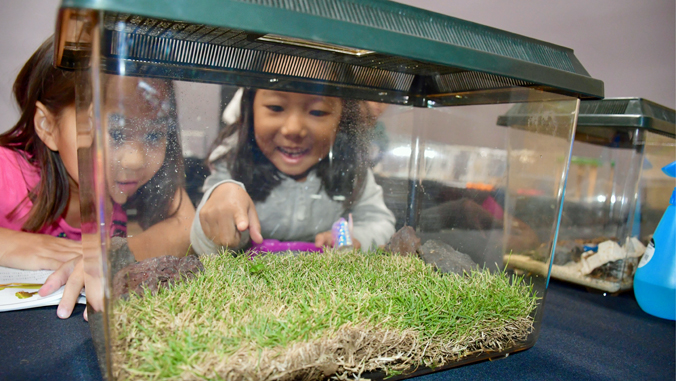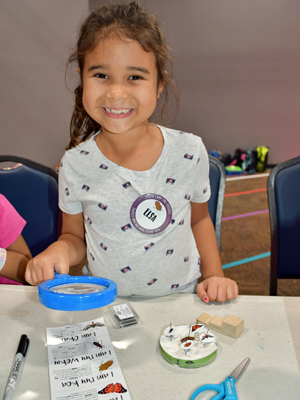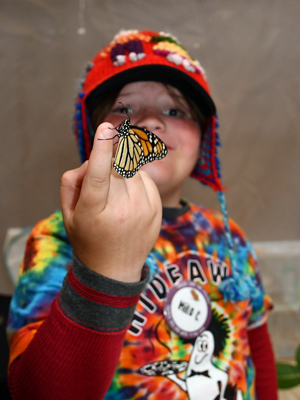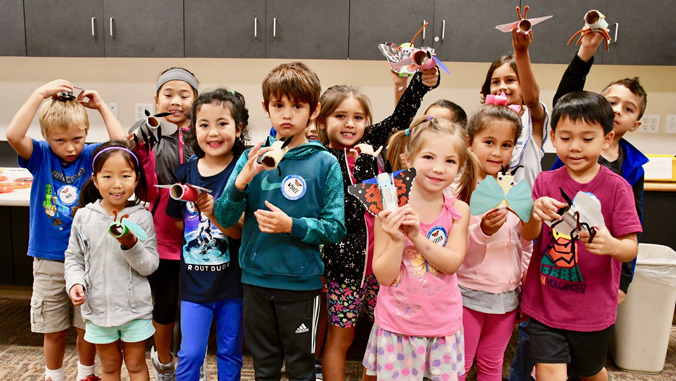
Young scientists explored native and endemic insects and spiders found in Hawaiʻī and nowhere else in the world at the University of Hawaiʻi at Hilo ʻImiloa Astronomy Center’s Camp ʻImi-Possible. The week-long program, “Fantastic Bugs and Where to Find Them,” took campers on an “insectigation” of curious creatures and their habitats.
Hawaiʻi is home to a spectacular array of spiders and insects, if you know where to look. Through hands-on activities, games and STEM-based art projects, the program took campers to the furthest corners of Hawaiʻi Island. They learned about Maunakea’s famous wēkiu bug, followed the life cycle of the Kamehameha butterfly and discovered what insects live in their own backyards through hands-on exploration of live insects brought into the classroom.


Campers also investigated insect mimicry, locomotion and adaptation through inquiry, investigation and engineering.
Taking advantage of ʻImiloa’s expansive museum environment, camp activities were conducted in the center’s leading digital planetarium, 12,000-sq.-ft. exhibit hall and five acres of native landscape gardens.
“Over the years, my keiki have participated in many camps and many other extracurricular activities. In terms of my comfort level, given the effort that ʻImiloa clearly put into planning, staffing, programming, logistics, etc., this was tops,” said one camp parent. “An excellent experience for me, as a parent, in terms of comfort. I knew my child was happy, engaged and safe.”
The center held two one-week summer camps, one in June and the other in July, for students from kindergarten to 4th grade.
More on Camp ʻImi-Possible
Camp ʻImiloa’s signature expertise in culture-based science programming to broaden STEAM learning and the teaching capacity of Hawaiʻi Island students and teachers. The camp engages elementary school students through hands-on activities unlike those found in a typical classroom setting.
“ʻImiloa’s mission is to honor Maunakea by sharing Hawaiian culture and science to inspire exploration. Our one-week camps are based on curriculum taught through Hawaiian cultural perspectives and build on the students’ connections to their geography and their genealogy,” said Kaʻiu Kimura, ʻImiloa Astronomy Center’s executive director. “Camp ʻImi-Possible is a very unique, engaging, educational and fun way for campers to learn about the world around them.”
For information on upcoming camps, please visit https://imiloahawaii.org.
Read more about the ʻImiloa Astronomy Center in UH News.


